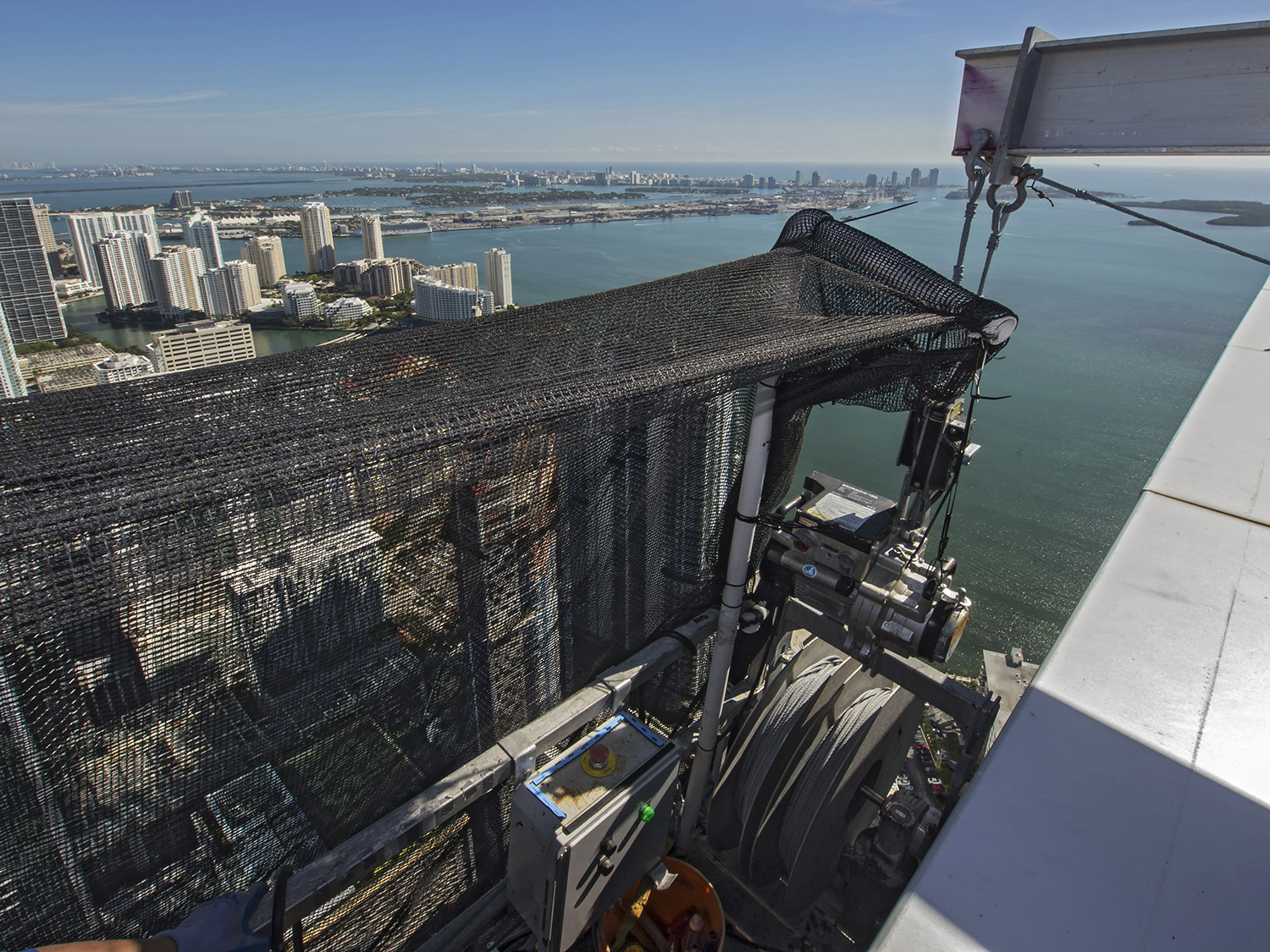
The Four Seasons Miami hotel and residence, which graced the city’s skyline at 800 ft., has had the distinction of being Florida’s tallest building since it opened in 2003. In November 2011, the building’s property management firm, Millennia Properties partnered with project facilitator, Shorecrest Construction to bring together a team for an extensive exterior waterproofing and glass maintenance project for the 70-story building.
With the hotel in full operation, and the Four Seasons’ stellar service reputation at stake, the maintenance has to be completed without impact to building guests and tenants.
To tackle the particular challenges of the job, Shorecrest enlisted the expertise of two Florida-based access companies, Bee Access Products and one of its local dealers, Contractor’s Access Equipment—specifically, Tom DeJong, vice president, and Brian Andrews, product engineer of Bee and Howard Taylor, branch manager of Contractor’s Access—to meet the equipment needs of the long-standing project.
The requirement that the maintenance work be discreet meant the access equipment used could not feature hanging wire rope, electric cables, or lifelines to the ground, which could potentially interfere with pedestrian traffic below or obstruct the view of residents and guests. Because the building’s two existing permanent installations (PI) are frequently used by the window washers, Bee, tasked with engineering the solution, decided that the best route was to design a small temporary platform—20-ft. long, 1,900 lbs.—that would be as inconspicuous as possible.
“The challenge in this design was trying to develop a system that would stand up to the rugged use—traveling 3,200 ft. per day—and the fact its next to the beach where there is salt in the air that could corrode the equipment,” said Andrews.
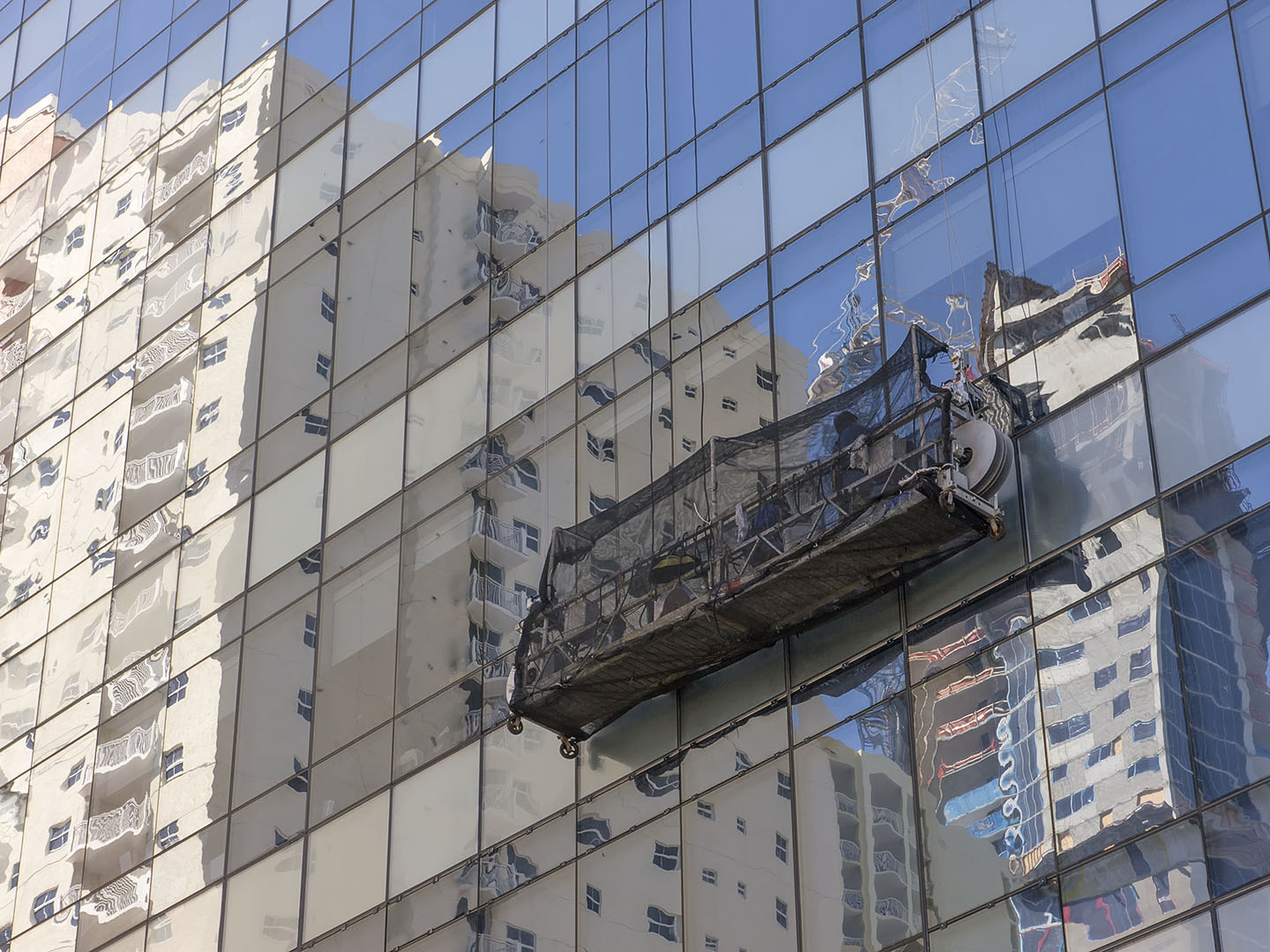
Requirement 1: No Hanging Lifelines
To solve the issue of hanging lifelines, a slack rope device is attached to the Bisomac210 hoists to allow for an independent secondary wire rope to be used, eliminating the need for vertical lifelines. Workers use a horizontal lifeline system created by attaching a 5/16-in.-diameter wire rope to static line brackets that are mounted to the mid-rail of the platform truss system. The workers then attach their harnesses to the static line via short double leg lanyards.
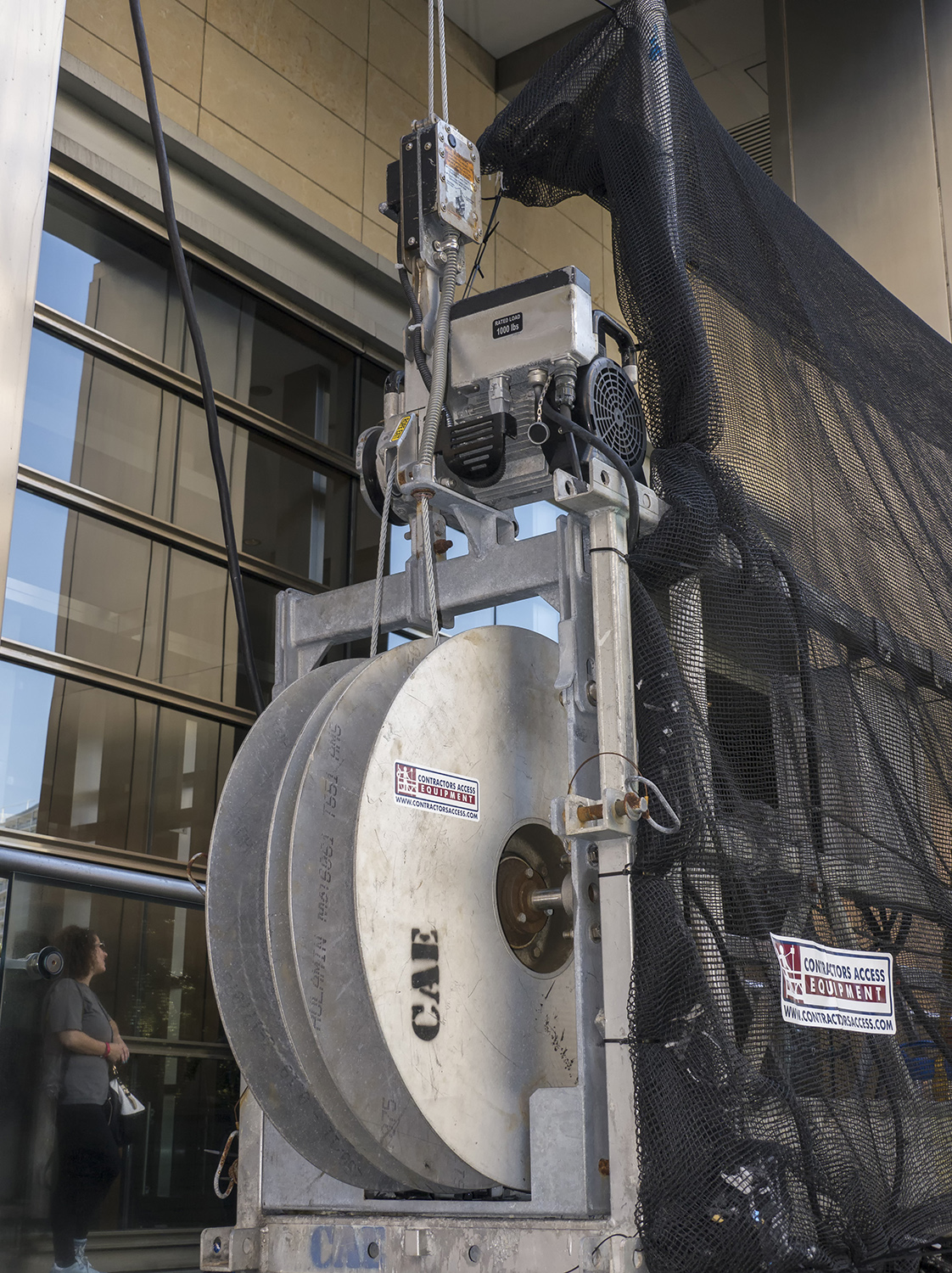
Requirement 2: No Hanging Wire Ropes
The need to collect the two wire ropes on each side of the platform lead to the modification of 1,000-ft. capacity dual powered wire winders (normally used on permanent powered platforms), for use with Bisomac210-1000 single-phase electric hoists commonly used in rental fleets. The hoist and winders are mounted to a pivoting end stirrup designed to fit on a standard Altrex modular platform. The powered winders collect the primary and secondary wire ropes when ascending, while a clutch mechanism allows the rope to be pulled off the drums while descending.
Requirement 3: No Hanging Electric Cables
Because of the extreme height and extra power requirements from the winders, a booster is needed for optimal performance; so three type 8/3 SOOW electric cables totaling 1,000 ft. are used to connect to the power source on the roof. Unique to the Bisomac210 single-phase hoist is its ability to scale these heights and deal with the subsequent huge voltage drops, thus allowing the operators to ascend or descend the full length of the building without overheating the motors.
The platform is securely stored at the top of the parapet wall daily, and the workers collect the electric cable on the deck of the platform. (Another option would have been to install an electric cable basket, mounted on the back mid-rail of the platform).
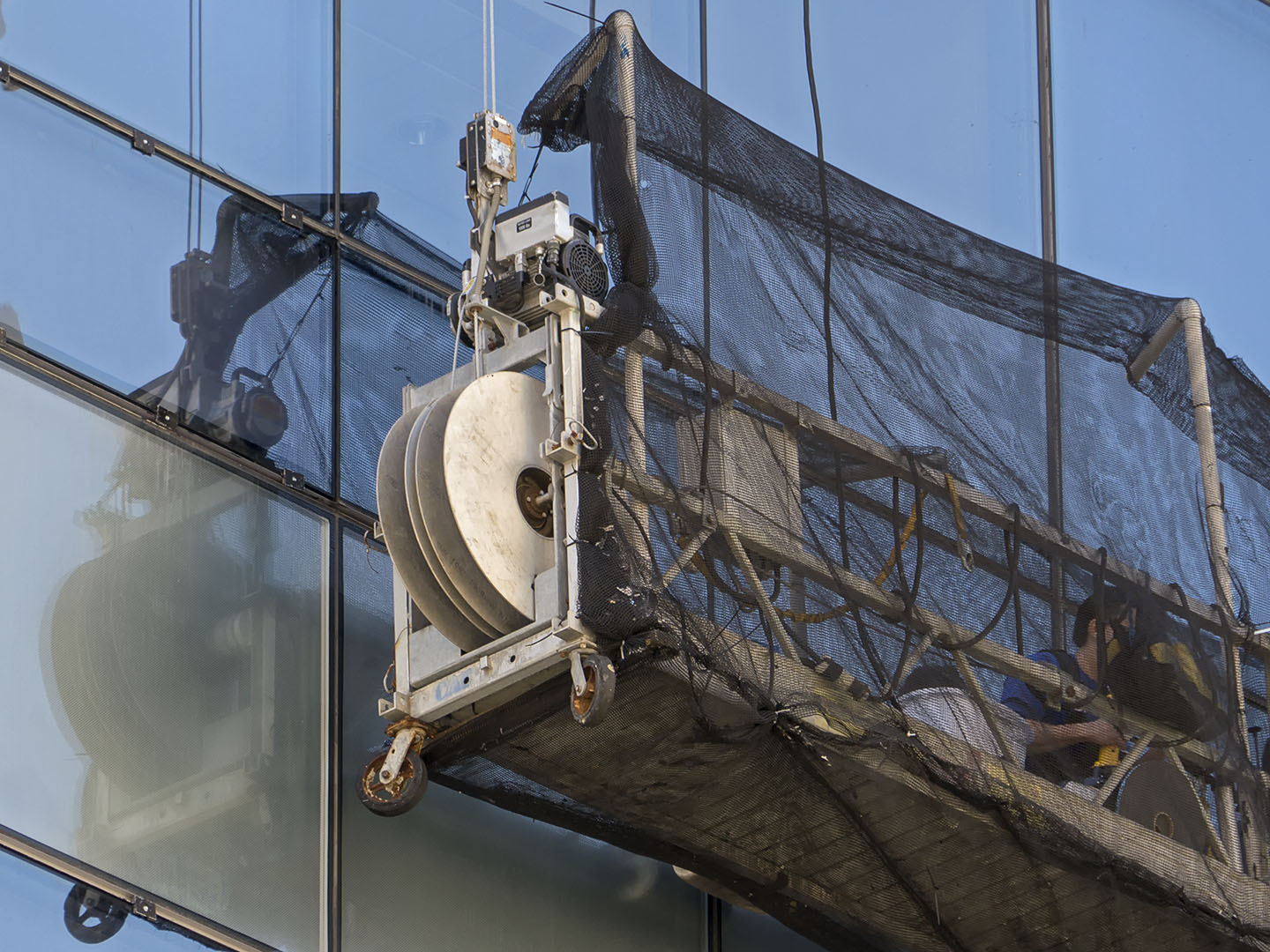
Miami-based HR Window Co. has been working on the Four Seasons Miami maintenance project for over two years now, with a tentative completion date of 2016. Within that time the equipment, including the wire winder was serviced twice—once for a loose screw (literally), and a second time for an annual maintenance.
“The equipment has performed great,” said Taylor. “During this project I have received less maintenance/parts replacement calls than on other recent jobsites.”
Jerry Wenzel, chief engineer working for the Four Seasons Miami said the custom platform has never broken down, unlike the PI system on the building, which is currently out of service.
Wenzel said the he’s confident the exterior maintenance will continue with ease.
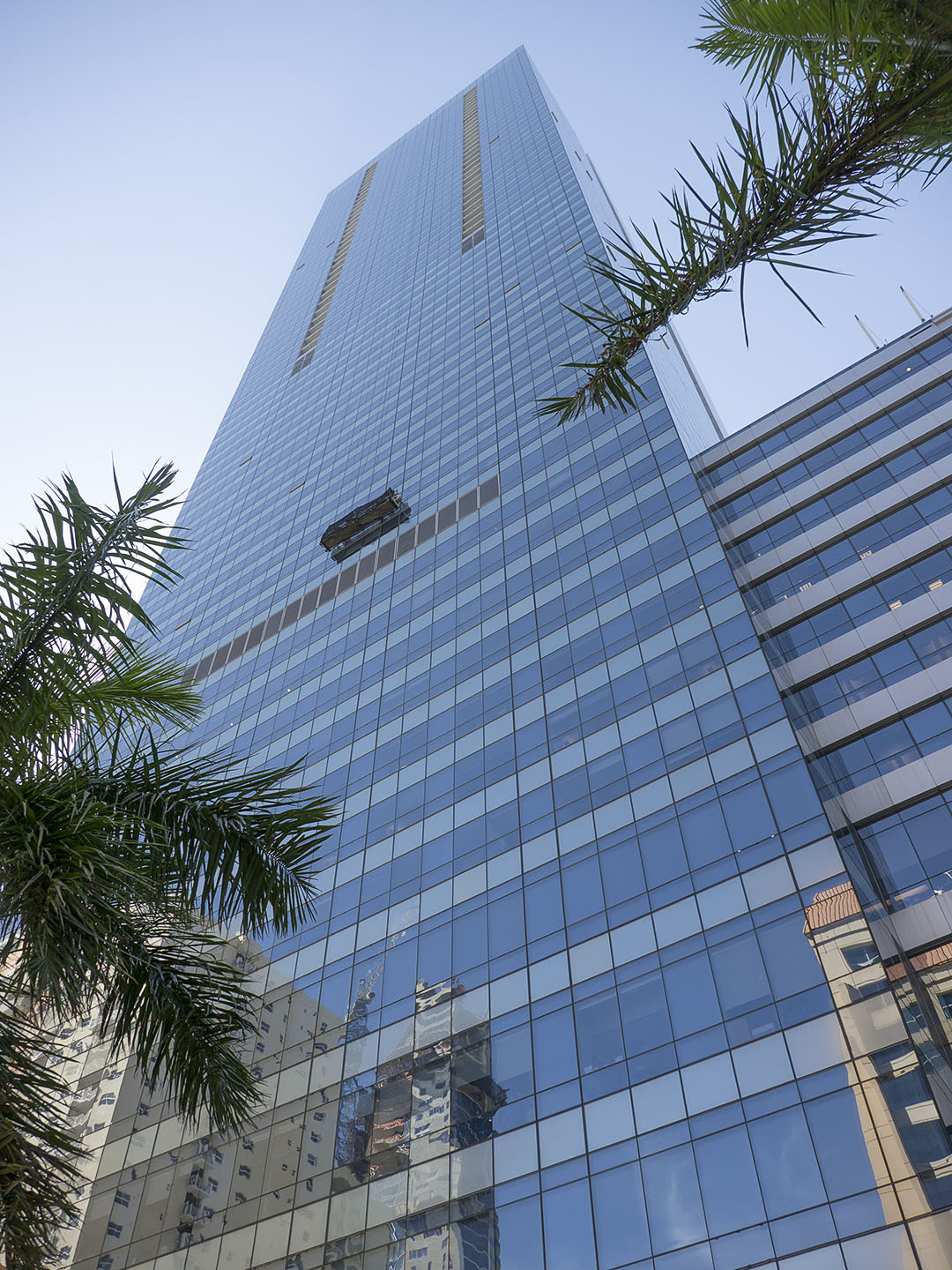
About the Author
Tom DeJong is the Executive Vice President of Bee Access
Contact him at: tomb@beeaccess.com.